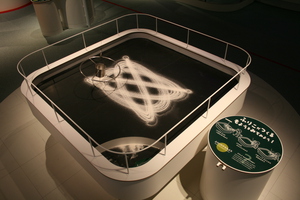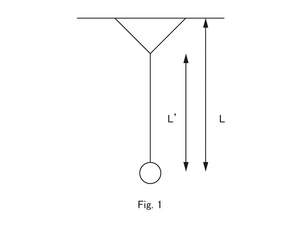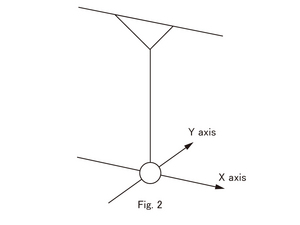Nagoya City Science Museum
TOP > Exhibition Guide > Keyword Search > Starting with "I" > isochronism > Pattern of Pendulum Movement
Pattern of Pendulum Movement



Purpose of Exhibition
A container is placed below a pendulum which contains sand, and has a hole drilled in its bottom. When the pendulum oscillates, the sand spills and draws beautiful figures.
There is a secret in the way to fix the cord to the ceiling. It is an exhibit closely related to oscillation, simple harmonic oscillation you may have learned as a physics subject.
Additional Knowledge
According to a well-known story, long ago the famous astronomer Galileo Galilei observed a church chandelier's oscillation, and he discovered that a pendulum is isochronous.
Isochronous means that in case of the same pendulum, the time required for one oscillation has no relation to the size of the oscillation and remains constant.
In other words, only the length is a factor in determining the oscillation of the pendulum. The weight of the pendulum extremity is not related either.
This is the important point.
Figure 1 displays the structure of the pendulum used in the exhibition.
Figure 2 displays the direction of the movement in three dimensions.
In case of oscillation toward the axis x direction, because the triangular portion is not related to the movement, the length of the pendulum is L.
However, when considering the movement of the axis y direction, it is related to the entire surface and part of the triangle, therefore the length of the pendulum must be L.
In short, x axis direction in short pendulum, small periodic oscillations, y axis in long pendulum, large oscillation period as a mix can result in one oscillation. The figure drawn by this pendulum edge is called the Lissajous figure. So, what kinds of shapes are drawn from the difference of length?This can be shown mathematically by a trigonometric synthesis.
It is continually studied in University science and engineering departments, and many people are working on this. Please try the challenge yourself if you are confident.
Article by Koichi Mabuchi, curator
